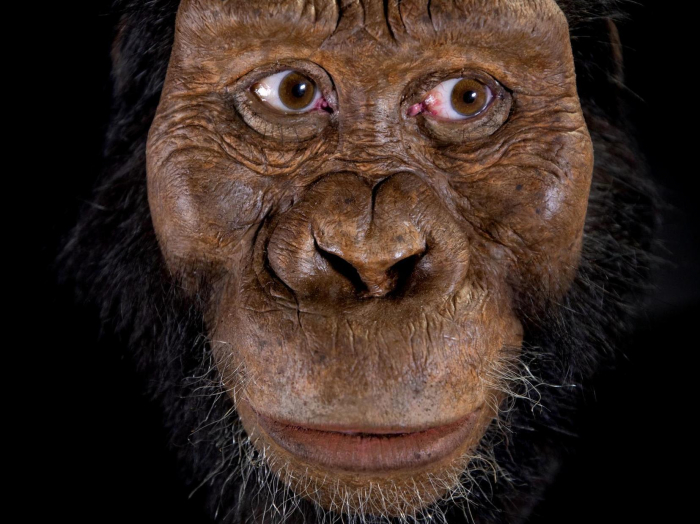The adult male – known as MRD – was from a species known as Australopithecus anamensis who roamed Ethiopia’s highlands millions of years ago. He is an ancestor of “Lucy”, one of the world’s most famous fossils who lived in the same area 3.2 million years ago.
The two early human species co-existed for 100,000 years, which rewrites previous research suggesting the older species gave way to the younger one. The earlier group – which MRD comes from – is the oldest known species that is unambiguously part of the human evolutionary tree.
“This is a game-changer in our understanding of human evolution during the Pliocene,” said lead researcher Yohannes Haile-Selassie from Cleveland Museum of Natural History.
The species was previously only known through teeth and jaw fragments, which all dated to between 2.4 and 3.9 million years ago, discovered in Kenya and Ethiopia. However, until now what these ancient humans looked like was a mystery.
The breakthrough came in 2016 when the upper jaw of the specimen was found by a local worker in the Afar region in Ethiopia, 55km away from the Lucy fossil. Later the rest of the skull was found.
“I couldn’t believe my eyes when I spotted the rest of the cranium. It was a eureka moment and a dream come true,” said Dr Haile-Selassie.
With this first skull, scientists can now identify never-before-seen facial features. Some characteristics were shared with Lucy but others were significantly different, resembling more primitive groups such as Ardipithecus and Sahelanthropus.
“MRD has a mix of primitive and derived facial and cranial features that I didn’t expect to see on a single individual,” said Dr Haile-Selassie.
“A anamensis was already a species that we knew quite a bit about, but this is the first cranium of the species ever discovered. It is good to finally be able to put a face to the name.”
The skull was discovered in the Woranso-Mille area of Ethiopia where many hominin bones have been unearthed. Two-hundred and thirty hominin specimens have been found here, most are between 3.8 and 3 million years old.
“Until now, we had a big gap between the earliest-known human ancestors, which are about six million years old, and species like ‘Lucy’, which are two to three million years old,” said Stephanie Melillo from the Max Planck Institute. “One of the most exciting aspects of this discovery is how it bridges the morphological space between these two groups.”
The remains were dated using minerals in layers of volcanic rock nearby.
Scientists concluded that MRD would have lived near a delta where a river entered a lake. It would have been an actively rifted landscape with steep hillsides and volcanic eruptions, blanketed in ash and lava. The river probably flowed from the highlands in the Ethiopian plateau.
“MRD lived near a large lake in a region that was dry,” said Naomi Levin, a co-author on the study from the University of Michigan. “We’re eager to conduct more work in these deposits to understand the environment of the MRD specimen, the relationship to climate change and how it affected human evolution, if at all.”
Both ancient male species would have grown to around 5ft and weighed around 100lbs. The females were around 3ft5 and weighed 62lbs.
Scientists now want to find out how these species interacted and if they competed for food or space.
Professor Fred Spoor, from London’s Natural History Museum and who was not part of the study, said the skull is “a great addition to the fossil record”.
“This cranium looks set to become another celebrated icon of human evolution,” he said.
Researchers have published two papers on their findings – the first on the structure of the cranium and the second on the age and context in which MRD lived. Both papers are published in the journal Nature.
The Independent
More about: ancestor
















































